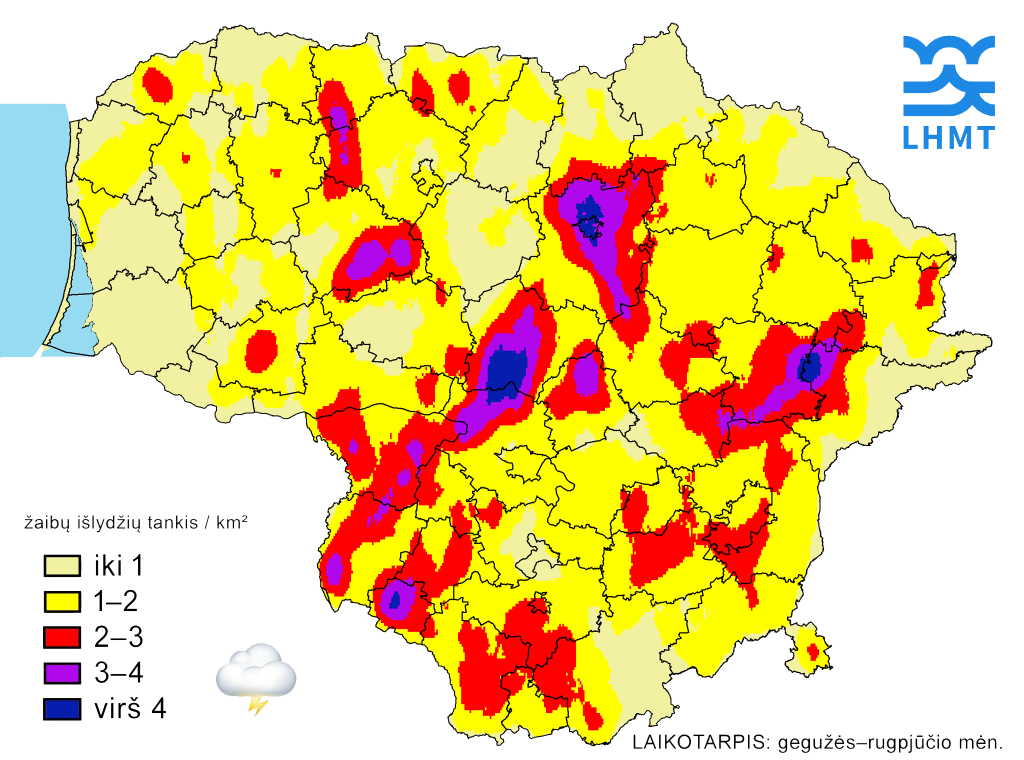2024-09-19 | Where was the most lightning in May – August?
Map showing the density of recorded lightning discharges. The areas with the most lightning often coincide with areas where heavy rainfall, hail and wind gusts may have occurred.
In 4 months, out of 102,700 discharges, only 22,500 (~22%) hit the ground from the clouds. The rest of the discharges were between the clouds and did not reach the ground. The most frequent targets of lightning are overhead and underground power lines, bodies of water (lakes, rivers) and tall buildings (towers, wind turbines, etc.). The most dangerous are positive lightning discharges striking the ground from clouds. These are the ones that are most likely to strike people, grazing animals or wildlife fatally, and set forests, houses, etc. on fire. . The number of such discharges was very small – 4,517, or just 4.4% (about 1 in 23) of all recorded discharges.
The highest density of lightning discharges was recorded in the municipalities of Panevėžys Alytus, Kalvarija municipality. In Panevėžys, Kėdainiai, Šakiai and Molėtai districts there were >2.4 lightning discharges per 1 km². The least thunderstorms (i.e. the calmest) were in the seaside and coastal areas of Neringa municipality, Šilutė and Klaipėda districts and Palanga municipality (<0.8 lightning discharges/km²).

The total number of discharges in the period May-August was 102.7 thousand. The days with the most thunderstorms in this period were:
- 11 July – 14.7 thousand discharges;
- 13 July – 13 thousand discharges;
- 2 June – 10.1 thousand discharges;
- 25 May – 9.8 thousand discharges;
- 25 July – 5.1 thousand discharges;
- 29 May – 5 thousand discharges;
These six days alone account for just over half of the May-August lightning discharges. In 123 days (4 months), 41 days had no thunderstorms anywhere in the country, while another 25 days had only up to 20 discharges.
⚡️ There were 36.1 thousand lightning discharges in May;
⚡️ In June – 21.5 thousand;
⚡️ In July – 38.7 thousand;
⚡️ In August – 6.4 thousand.
Lightning detectors installed at meteorological stations in Lithuania (Biržai, Šilutė, Varėna and Raseiniai) record sky-to-ground lightning discharges and cloud-to-cloud discharges. Lightning detectors detect more than 90% of all lightning discharges within a 350 km radius. Thus, some thunderstorms go undetected (usually cloud-to-cloud discharges).
Prepared by LHMS meteorologist Gytis Valaika